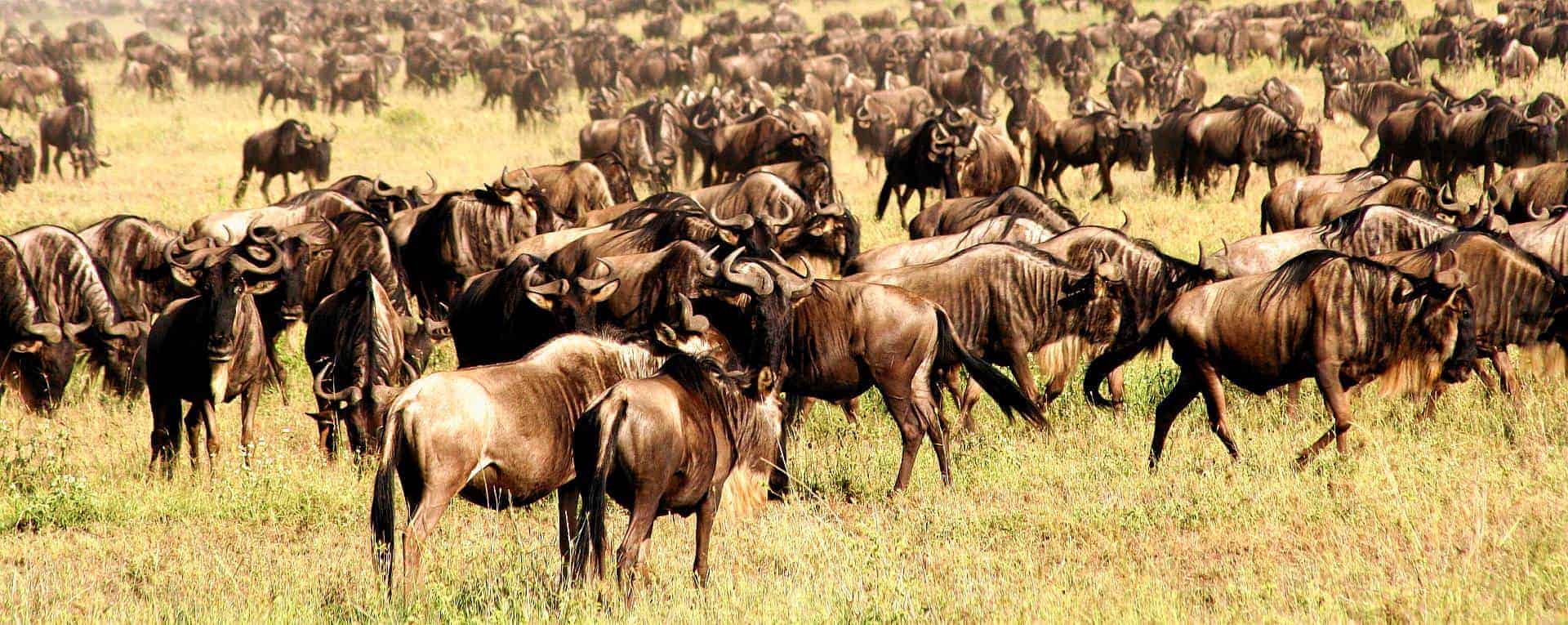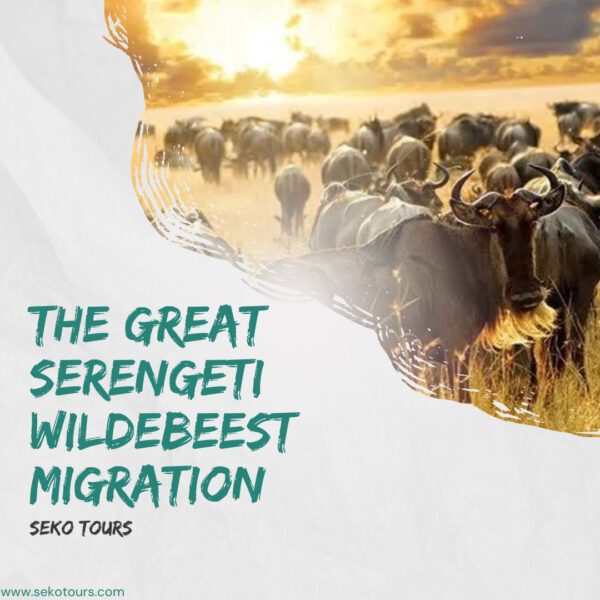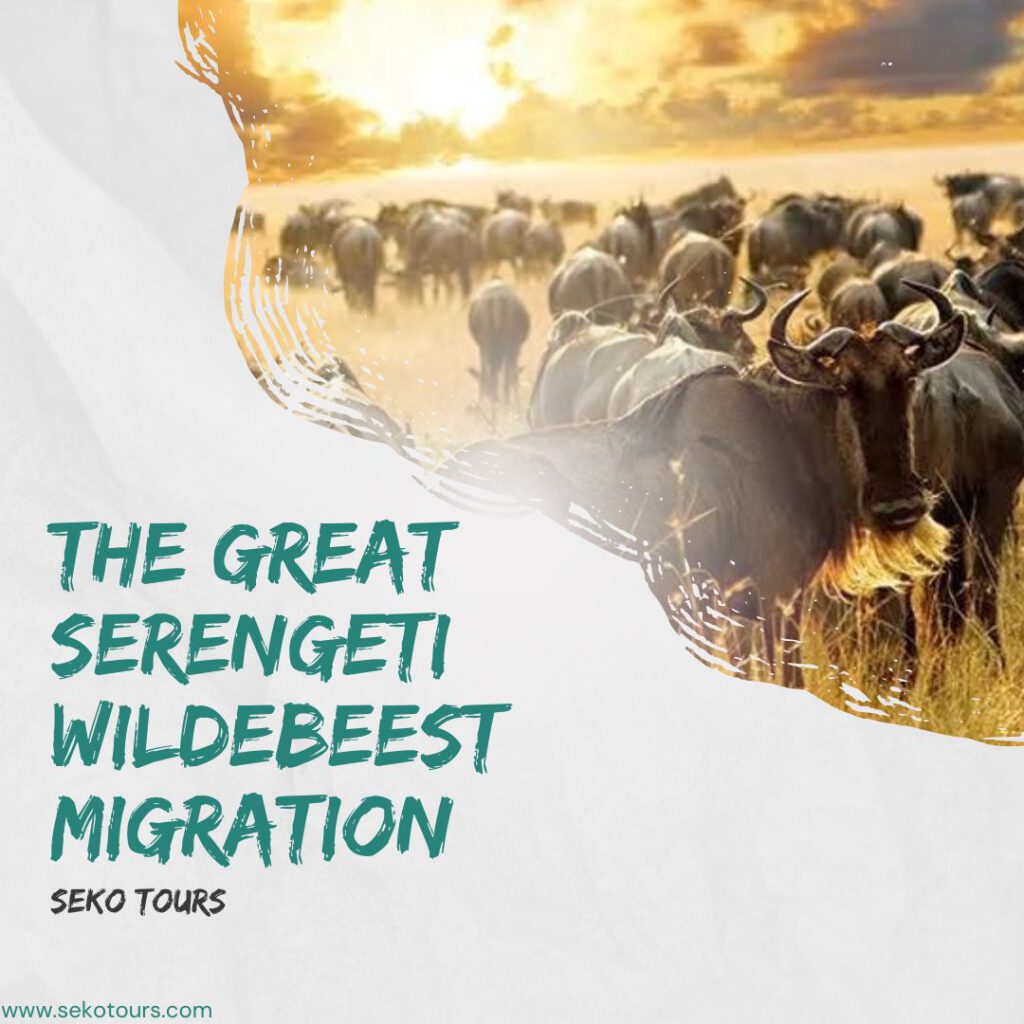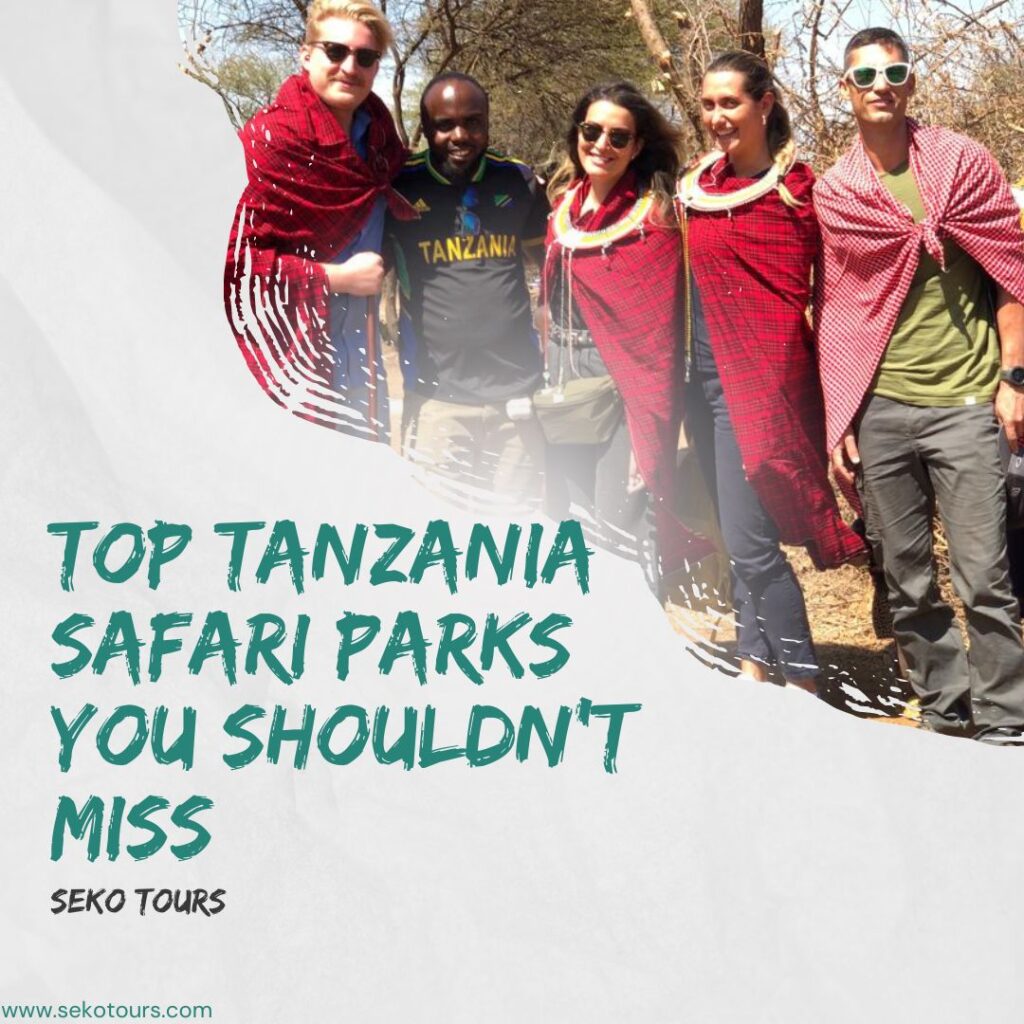The plains of East Africa come alive every year with a thundering spectacle – The Great Serengeti Wildebeest Migration. Over 2 million wildebeest, joined by hundreds of thousands of zebra and gazelle, embark on a breathtaking journey across Tanzania and Kenya in search of greener pastures. This awe-inspiring event, dubbed the “greatest show on Earth”, is a once-in-a-lifetime experience for any nature enthusiast.
A Timeless Dance with Nature:
Driven by the rhythm of the rains, the migration is a complex, year-round cycle. Here’s a glimpse into their incredible journey:
- November – December: The herds, sensing the first rains, move south from the Masai Mara in Kenya to the lush short-grass plains of the southern Serengeti.
- February: Calving season transforms the plains into a sea of life, with over 500,000 calves born within a few weeks. Witness the wonder of new life amidst the thundering hooves.
- March – May: As the grasses dry, the migration swings north, traversing the vast plains and facing treacherous river crossings. The iconic Mara River crossing, with wildebeest braving crocodile-infested waters, is a highlight.
- June – October: Reaching the lush grasslands of the northern Serengeti, the herds graze and replenish before the cycle begins anew.
Beyond the Numbers:
The migration is more than just a movement of millions. It’s a drama of survival, where predators like lions and crocodiles lurk, and the elements themselves pose challenges. Witnessing this struggle for life unfolds before your eyes is a humbling experience.

Planning Your Serengeti Safari:
The migration occurs year-round, but the best time to witness specific stages depends on your preference. Here’s a quick guide:
- Calving season (February – March): Witness the wonder of newborn calves and abundant life.
- Mara River crossings (July – August): See the dramatic struggle and raw power of nature.
- Herds in the north (July – October): Experience the vastness of the migration and diverse landscapes.
Tips for Responsible Tourism:
- Choose eco-friendly tour operators who prioritize the well-being of the animals and ecosystem.
- Respect the animals’ space and avoid disturbing their movements.
- Minimize your environmental impact by following responsible waste disposal and minimal water usage practices.
The great Serengeti Wildebeest Migration
The Great Serengeti Wildebeest Migration is a journey that will leave you breathless and forever etched in your memory. Start planning your African adventure today and be part of this unforgettable natural wonder!
RELATED POST:
Top Tanzania Safari Parks You Shouldn’t Miss




